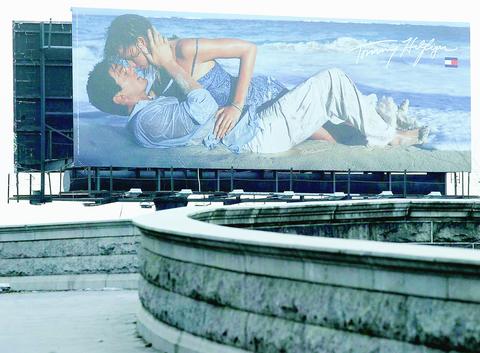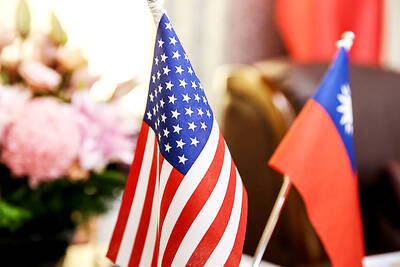On the glossy pages of magazines, young men and women frolic on a beach, wearing unlogoed T-shirts and short shorts, their aura that of sun and surfboards. In their relaxed, vaguely privileged demeanor, this photogenic crowd presents an undeniable contrast to the urban image of the same brand a decade ago, when the models wore their hair in dreadlocks and swaggered down the street, bold and cool, with a big "Tommy Hilfiger" on their oversize sweats.
Now the dreadlocks are gone from the advertisements -- and the big red, white and blue "Tommys" are pretty much gone from the streets. The Tommy Hilfiger Corp has announced that it is moving away from its logo after many of the company's earlier urban constituencies abandoned Tommy for designers they call more "authentic": Fubu, Ecko, Phat Farm, J.Lo and Sean John.
"Tommy, Polo Jeans and Nautica are big losers," said Todd Slater, an analyst at Lazard, "but the biggest loser is Tommy; he's lost the most market share. Ralph has not lost his core customer the way Tommy has," he said, referring to Polo Ralph Lauren. "As a company, Tommy has to reinvent itself."

PHOTO: NY TIMES
Many analysts, investment bankers and other industry watchers say the company is struggling to find new direction; they see its latest advertising campaign and the bus trip company officials are making to winter vacation spots this week -- a Florida beach tour complete with amateur model contests -- as only the latest signs of desperation. The company's stock has plummeted from its May 1999 high of US$41.06; it closed on Friday at US$5.73, near its all-time low.
The company is now closing 37 out of 44 Tommy Hilfiger specialty shops in the US -- some of which were opened with great fanfare only months before. For the three months ended on Dec. 31, the company lost US$22.1 million on sales of US$477.3 million.
And while its sales of women's and children's clothes were up from a year earlier, men's wear, echoing a national trend, was down 11.7 percent. And the company's jeans business, once a mainstay, has fallen off precipitously, analysts say. Joel Horowitz, the company's chief executive, last month lowered earnings projections for next year.
Recent management changes at the company illustrate the term "revolving door." Hilfiger himself assumed the job as chairman in October, but quit last month to reclaim his longtime title as honorary chairman. He remained the principal designer.
Horowitz, who said earlier that he had wanted to wind down his day-to-day responsibilities next year, assumed the additional duties of chairman; he said he has been interviewing candidates to succeed him as chief executive. Lawrence Stroll resigned as co-chairman last July, leaving Silas Chou, the other co-chairman, in the post. Then he left, and Hilfiger took over.
"Maybe a new CEO, maybe some new ideas will help, but I view the Tommy business as essentially mature," said Margaret Mager, an analyst at Goldman Sachs, and the author of several reports on the company. "I don't think it's going to come back. The froth is off the cappuccino, and it's not going to get frothy again."
Many clothing companies have trouble appealing to fickle teenage customers, but the Hilfiger Corp has additional problems. It does much of its business in department stores -- Mager estimated 50 percent to 60 percent of the company's business. And department stores themselves, as everyone knows, are in trouble.
In a rush to separate itself from the other mainstream stores, Bloomingdale's -- known as a longtime loyal customer for Tommy Hilfiger's goods -- has cut back its Hilfiger men's boutiques to one from 23. Bloomingdale's has also reduced its Tommy Hilfiger women's boutiques, to nine from 23, looking to bring in clothes that consumers find more distinctive.
"Tommy Hilfiger has been a great partner to Bloomingdale's for many years," said Anne Keating, a spokeswoman for the chain, "but we have to differentiate ourselves from other department stores."
In a weak retail atmosphere, Bloomingdale's, like other chains, has been seeking fashions that it can call its own.
The Tommy Hilfiger Corp, based in Hong Kong, declined to make Hilfiger or other senior executives available for interviews. It referred a reporter to its taped conference calls with securities analysts. During the call in early February, Horowitz, while announcing that he had lowered earnings estimates for fiscal 2004, which begins on April 1, said the company was still strong, especially in Europe.
In fiscal 2002, European sales were 10 percent of the company's business; in fiscal 2003, they were expected to have grown to 15 percent and in 2004, to 25 percent. Germany, despite its economic stagnation, is considered a particularly vibrant market for the Hilfiger Corp, followed by Spain. The company owns 18 stores in Europe; 56 are owned by franchisees. Of the 74 European stores, 17 are outlets.
Bright spots
The company's chief executive, Horowitz, also said Tommy Hilfiger Woman -- the division for its plus-size clothing -- was doing well: Last year, its clothes were stocked in 300 stores. Now there are 700.
Horowitz also reported a 14.7 percent increase of sales of children's wear, to US$70.6 million, and said the outlet business -- which accounts for 10 percent to 15 percent of the company's sales -- remained strong. Yet he said that primarily because of the increasing number of markdowns and bargain sales, the business outlook was uncertain. Sales of junior sizes, mostly worn by teenagers, had softened; industry analysts said they had declined considerably. And the men's business suffered, "only partially offset by growth in Europe," Horowitz said.
Horowitz told analysts that besides diminishing the number of logos, the company was trying to come up with fresh styles. The denim business, he said, is now dominated in the department stores by what he called the urban brands. Because those brands are now as successful in using their own logos -- much as Tommy Hilfiger was in the past -- Horowitz said his company now "needs to be more fashion-right with the denim details that we put forth through fabric or sophisticated washes, and compete more on the product side versus the logo side.
"It's more about going away from logo than changing the demographic of who we think that consumer is," he said. "We have always said that jeans are for teens, and that's our focus customer."
Nevertheless, analysts and others in the retail industry wonder why the company's advertising campaign has swung so far away from the urban look.
"Now it's Robert Redford," said one fashion designer, who knows the brand well. "Why would he try to go back to being Ralph Lauren -- when that market is already saturated?"
A huge billboard for Tommy Jeans, high above the West Side Highway in New York, shows a preppy bunch of young adults, standing in what appears to be a beach hut with the ocean behind it. The other side of the billboard was described by a competitor as "Pacific Sunwear meets Ralph Lauren meets From Here to Eternity," and shows a man on a sandy beach with a drenched blue shirt embracing a woman as the waves roll in.
A stylized American flag, once prominent in Tommy Hilfiger's designs, is no longer emblazoned on the clothes.
"The inspiration for the spring lines comes from Tommy's own interest in Mustique," said Caren Bell, a spokeswoman for the company, referring to the Caribbean island where Mick Jagger has a house and where Princess Margaret vacationed for many years. Hilfiger "has a house down there, and the whole spring line is influenced by Mustique," she added. (The fall line is influenced by the Beatles and the swinging '60s.)
Bell, asked why the images of the new campaign have changed so much, said that the company's advertising "is always evolving and changing," and that "the images speak to where the clothing is right now: slightly more sophisticated, slightly sexy."
While the company is altering its image, it also is focusing on fundamentals.
During the Feb. 5 conference call on its earnings, Horowitz said the company was debating how to use its substantial cash on hand -- US$485.6 million at the end of last year, when its long-term debt was US$513.4 million. In the conference call, one analyst suggested that the company might be better off spending part of the money to buy back some of the stock, showing confidence in itself.
Horowitz replied that the uses of cash had been discussed by the board, which had decided unanimously to maintain "a very healthy balance sheet."
"We know that the stock is a very attractive stock," he said. "However, with all the uncertainties that are going on today, we don't feel that's the best use of cash for long-term shareholder value."
Horowitz pointed out that the company did repay US$4.4 million of its debt in the final three months last year. But he said that the company was looking at a number of priorities. The first is consolidating operations. "Second is to continue to pay down debt," he said, and third is "to consider opportunities that can diversify our revenue base."
Most analysts said they assumed that meant buying some other companies that have more growth potential than the Tommy brand. (Bell, the spokeswoman, said she had no comment on whether the company was interested in acquiring others or if it was on the market.)
Marvin Traub, the former chairman of Bloomingdale's and the chairman of Financo Global Consulting, said that he thought the company was in better shape than most people realized.
"Everyone is jumping up and down, implying that Tommy's in big trouble," he said. "But look at the financials: Tommy once had a very profitable business -- he was one of the first to build such an enormous business in the department stores. Now his stock is incredibly depressed because people are concerned about where the company is heading."
`Still strong'
Nevertheless, the brand is still selling, Traub said, "and earnings are almost the same as they were a year ago."
"It's not a disaster, although it certainly has leveled off," he said.
Traub said he disagrees with people who say the company has run out of steam.
"He may have lost his ethnic business," he said, "but the company is still strong." Still, he added, "it would be healthy for him to take a fresh look at the business."
With annual sales of nearly US$1.9 billion, the Tommy Hilfiger Corp is bigger than Donna Karan International, and close to Polo Ralph Lauren.
And Tommy Hilfiger is still one of the highest-paid fashion executives in the world. Last year, he made US$27.9 million in total compensation; Lauren received nearly US$8 million.
Other apparel stocks have had problems, too. After Karan's company went public in 1996, its stock plummeted and the company was later sold to LVMH Moet Hennessey Louis Vuitton, the French luxury goods conglomerate.
Polo Ralph Lauren's stock fell from a high of US$33 in June 1997 to a low of US$12.75 in May 2000, though it has since rebounded to US$20.63.
Management's view of the future is mixed. Although the children's wear business has improved, and women's clothes have continued to be consistently strong, Horowitz is not being particularly optimistic.
"Based upon current negative trends in apparel spending, we believe it is unrealistic to expect improvement in sales and earnings in the upcoming year, and we are planning both the wholesale and retail businesses accordingly," he said.
For the year beginning April 1, Horowitz predicted that revenue would fall by "mid- to high single digits percentage range" from the current fiscal year. Retail sales are expected to grow 5 percent to 10 percent, driven partly by the stores opening in Europe and elsewhere abroad.
But Horowitz predicted that wholesale revenue would fall -- 5 percent to 10 percent for men's and women's and 20 percent to 25 percent for children's, where the company plans to abandon some of its worst-performing markets.
Altogether, the company plans to withdraw its clothing from several hundred stores, largely in the US, that are not producing enough revenue and may be further diluting an already diluted brand name.
But the biggest question for the company has to do with acquisitions. Is the Tommy Hilfiger Corp for sale? Or is it looking to buy other companies, to freshen its own brand?
Bell, the spokeswoman for the company, declined to answer questions about its acquisitions strategy.
Most industry insiders -- investment bankers and retail analysts -- said the company is not for sale. Mager, of Goldman Sachs, said the company would not be for sale because the brand is "mature" or has less growth potential than a smaller, nimbler clothing company.

CROSS-STRAIT COLLABORATION: The new KMT chairwoman expressed interest in meeting the Chinese president from the start, but she’ll have to pay to get in Beijing allegedly agreed to let Chinese Nationalist Party (KMT) Chairwoman Cheng Li-wun (鄭麗文) meet with Chinese President Xi Jinping (習近平) around the Lunar New Year holiday next year on three conditions, including that the KMT block Taiwan’s arms purchases, a source said yesterday. Cheng has expressed interest in meeting Xi since she won the KMT’s chairmanship election in October. A source, speaking on condition of anonymity, said a consensus on a meeting was allegedly reached after two KMT vice chairmen visited China’s Taiwan Affairs Office Director Song Tao (宋濤) in China last month. Beijing allegedly gave the KMT three conditions it had to

STAYING ALERT: China this week deployed its largest maritime show of force to date in the region, prompting concern in Taipei and Tokyo, which Beijing has brushed off Deterring conflict over Taiwan is a priority, the White House said in its National Security Strategy published yesterday, which also called on Japan and South Korea to increase their defense spending to help protect the first island chain. Taiwan is strategically positioned between Northeast and Southeast Asia, and provides direct access to the second island chain, with one-third of global shipping passing through the South China Sea, the report said. Given the implications for the US economy, along with Taiwan’s dominance in semiconductors, “deterring a conflict over Taiwan, ideally by preserving military overmatch, is a priority,” it said. However, the strategy also reiterated

‘BALANCE OF POWER’: Hegseth said that the US did not want to ‘strangle’ China, but to ensure that none of Washington’s allies would be vulnerable to military aggression Washington has no intention of changing the “status quo” in the Taiwan Strait, US Secretary of Defense Pete Hegseth said on Saturday, adding that one of the US military’s main priorities is to deter China “through strength, not through confrontation.” Speaking at the annual Reagan National Defense Forum in Simi Valley, California, Hegseth outlined the US Department of Defense’s priorities under US President Donald Trump. “First, defending the US homeland and our hemisphere. Second, deterring China through strength, not confrontation. Third, increased burden sharing for us, allies and partners. And fourth, supercharging the US defense industrial base,” he said. US-China relations under

The Chien Feng IV (勁蜂, Mighty Hornet) loitering munition is on track to enter flight tests next month in connection with potential adoption by Taiwanese and US armed forces, a government source said yesterday. The kamikaze drone, which boasts a range of 1,000km, debuted at the Taipei Aerospace and Defense Technology Exhibition in September, the official said on condition of anonymity. The Chungshan Institute of Science and Technology and US-based Kratos Defense jointly developed the platform by leveraging the engine and airframe of the latter’s MQM-178 Firejet target drone, they said. The uncrewed aerial vehicle is designed to utilize an artificial intelligence computer